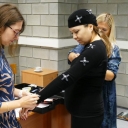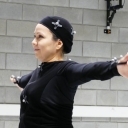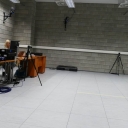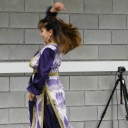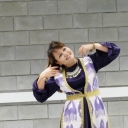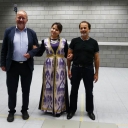The LAZGI dance is one of the folk dances inscribed on the UNESCO World Intangible Heritage List. It is a kind of visiting card of the Khorezm region in Uzbekistan.
For several years, the Department of Computer Science has been cooperating with colleagues from Central Asia (Uzbekistan, Kyrgyzstan, Kazakhstan) in the area of digitization of the material cultural heritage of the Silk Road. The Department of Computer Science has already completed five Scientific Expeditions to Central Asia. The expeditions were initially financed from the Lublin University of Technology’s own funds, and now they are financed by the “3D Digital Silk Road” project awarded by the National Agency for Academic Exchange (NAWA) as part of the International Academic Partnership program (https://cs.pollub.pl/projects/3d-digital-silk-road-digitalizacja-zabytkow-jedwabnego-szlaku-w-uzbekistanie/?lang=en).
As part of the work on the 3D digitization of the world cultural heritage, on 28/09/2021 at the Laboratory of Motion Analysis and Ergonomics of Interfaces (LARiEI) of the Department of Computer Science, the research movement analysis research group using a unique motion capture installation (https://youtu.be/XR5v4bRcWik) carried out 3D scanning LAZGI dance. The dance was performed by Professor Dilbar Mukhamedowa from the National University of Uzbekistan in Tashkent, Uzbekistan. The professor, apart from psychology, deals with Uzbekistani folk dances as her hobby. She was dressed in a special costume with retro-reflective markers attached, thanks to which the movement of the figure was recorded.
The scanning was performed by a team of LARiEI employees in the persons of Prof. Marek Miłosz, Dr. Maria Skublewska-Paszkowska, Dr. Edyta Łukasik; Dr. Jakub Smołka; Dr. Waldemar Suszyński and Dr. Paweł Powroźnik.
This is probably the first attempt in Poland to 3D digitize folk dance, which is included on the intangible heritage UNESCO list.
Marek Milosz

